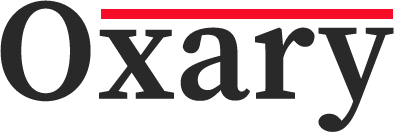Zoom Video Communications (NASDAQ:) shares hit a new 52-week low despite improvements indicating normalization may be near completion in its business. Zoom stock was the darling of the pandemic era, surging to a high of $588.84 in October 2024 as the whole world went virtual during the global lockdowns. Zoom became a household name and even a verb to describe engaging in video conferences, visits, and meetings. It’s become a permanent fixture in the remote and hybrid work segment. The macro market sell-off has accelerated the selling in Zoom Video.
It’s evident that people are making fewer Zoom calls for social engagements, but the markets care more about whether normalization has concluded and growth resumes in the enterprise business segment. Investors are left to wonder if Zoom shares are getting too cheap to pass up.
Zoom competes with computer and technology sector giants like Microsoft (NASDAQ:) Teams, Salesforce (NYSE:), and Adobe (NASDAQ:).
The Evolution of AI Integration
Zoom is mainly known for its video conferencing app and software. What originally started as a video conferencing platform has evolved into a full communications and work collaboration ecosystem. Its Zoom Workplace is an AI-powered collaboration platform that includes meetings, team chat, a scheduler, a whiteboard and spaces. It formed a partnership with Avaya Holdings Co. to integrate with its Communication & Collaboration Suite.
Virtual Agent is an AI-powered feature in its Contact Center offering. Virtual Agent has helped save over 400,000 agent hours per month. Generative AI is used to generate meeting notes, summaries and transcription services. Its AI also offers non-verbal cue detection and speaker identification.

Daily Descending Triangle Pattern
ZM has a descending triangle breakout pattern on its daily candlestick chart. The daily descending trendline formed at $70.60 on March 12, 2024. The lower flat-bottom trendline is at $60.14. As shares approach the apex point, ZM is breaking down under the flat-bottom trendline. The daily market structure low (MSL) trigger forms a breakout through $60.75. The daily relative strength index (RSI) is flat around the 30-band. Pullback support levels are at $59.01, $57.52, $54.56 and $51.12.
The days of Zoom’s scorching hot 325% growth during the pandemic era are over. Investors will have to settle for the 2.6% YoY growth achieved in its fiscal Q4 2024. The $1.15 billion in revenues still beat consensus estimates for $1.13 billion. Zoom has returned to profitability. Its GAAP income rose to $168.5 million in the quarter compared to a loss of $129.9 million in the prior year quarter. The EPS performance of $1.42 beat consensus estimates by 27 cents.
The enterprise business rose 5% Year over Year in the quarter, bringing Zoom’s year-end total of enterprise customers to 220,400. Customers with $100,000 or more in contract value rose 9.8% Year over Year to 3,810 in the quarter. Zoom closed the fiscal year with $7 billion in cash and cash equivalents, which is nearly 40% of its market capitalization. They also authorized a $1.5 billion stock buyback.
Raised EPS Estimates
Zoom Video lifted fiscal full-year 2025 EPS to $4.85 to $4.88, beating $4.66 consensus estimates. For fiscal Q1 2025, revenues are expected to be around $1.125 billion.
Growth in Phone
Zoom Video CFO Kelly Steckelberg noted its growth in Zoom Phone at the KeyBanc Emerging Technology Conference. Steckelberg commented, “And by the way, now with the advent of AI, like one of the features that you’re going to get with Zoom AI companion is call summaries. So, if you’re having a phone call, you can get a summary of that just like you can get a meeting summary. That innovation that’s going to happen with AI is not going to be happening with those on-prem providers.
Rosenblatt Upgrade
On April 18, 2024, Rosenblatt Securities upgraded shares of Zoom Communications to a Buy from Neutral with a $75 price target. Analyst Catherine Trebnick noted that the upgrade considered a refocused channel strategy, momentum in the Zoom Phone and contact center-as-a-service (CCaaS) market, a healthy balance sheet and the $1.5 billion stock buyback.
remove ads
.



